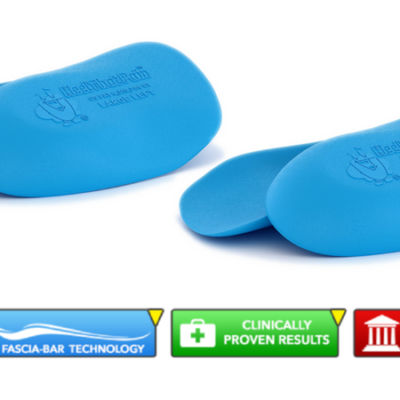Arthritis in the Foot and Heel
The foot has thirty-three joints, all of which are extremely susceptible to arthritis. Arthritis is the inflammation of the cartilage and lining of the joints, along with an increase in joint fluid. Arthritis can affect any area of the body, but because the feet are so heavily used, arthritic pain is very common in the heels and ankles.
Arthritis can be caused by a number of different factors. If you have more than two risk factors, you have an increased chance of developing arthritis in the feet and ankles.
Risk Factors of Arthritis in the Feet:
- Injury or Strain: Sprains, strains, and tendonitis of the feet and heels can contribute to arthritis heel pain later in life.
- Repetitive Use: Athletic persons and industrial workers are at high risk for arthritis due to the repetitive tasks and motions.
- Heredity: If someone in your family, especially older relatives, has arthritis then you could be at higher risk.
- Infection: If you have ever had a bacterial or viral infection in your foot, these can cause joint damage and lead to arthritis.
- Intestinal disorders: Certain gastrointestinal disorders, such as ileitis and colitis can cause arthritis in the feet and ankles.
- Drugs: Certain prescriptions and illegal drugs can cause arthritis.
There are two main types of arthritis that are usually seen in the foot, rheumatoid arthritis and osteoarthritis.
Osteoarthritis in the Heel
Osteoarthritis is a degenerative condition common in older people. Usually affecting one or more joints, osteoarthritis can be caused by obesity, age and certain types of trauma. Other types of bone changes may occur in conjunction with osteoarthritis, such as bone spurring, cartilage destruction, and joint space narrowing.
Rheumatoid Arthritis in the Heel
Rheumatoid arthritis is a systematic disease that is most prevalent in the hands and feet. Causing other foot problems such as hammertoes, bunions, metatarsalgia, and other bone issues, severe forefoot pain is seen. Rheumatoid arthritis is a chronic disease, leading to permanent joint destruction if not taken care of properly.
So, how do you know if you have arthritis of the foot?
Common Symptoms of Arthritis of the Heel
- Stiffness in the morning
- Recurring pain in any joint
- Redness or heat in the joint
- Swelling of the joint
- Limited movement
- Skin changes including rashes or growths
Luckily, there are treatment options for arthritis pain in the feet.
Arthritis Heel Pain Treatments
Physical therapy and low impact exercises can help to strengthen the joints and tissues while slowing the deterioration of the joint, relieving arthritis pain. Supportive footwear is important, especially shoes with a wide toe box, to accommodate any type of distorted toes or sore joints.
Other treatments for arthritis include:
- Medications such as aspirin or anti-inflammatory
- Topical arthritis medications or anti-inflammatory cream
- Removable gel insoles with cushion and arch support
- Foot, ankle or knee supports
- Over-the-counter Glucosamine and Chondroitin supplements
Rocker bottom soles to help walking and reduce the stress on the balls of the feet
Preventing Arthritis in the Feet
The best way to treat arthritis is prevention. Take care of your feet by immediately treating any injury and visiting a podiatrist or orthopedic specialist if you have any concerns. Your joints should never hurt; pain is your body telling you something is wrong!






